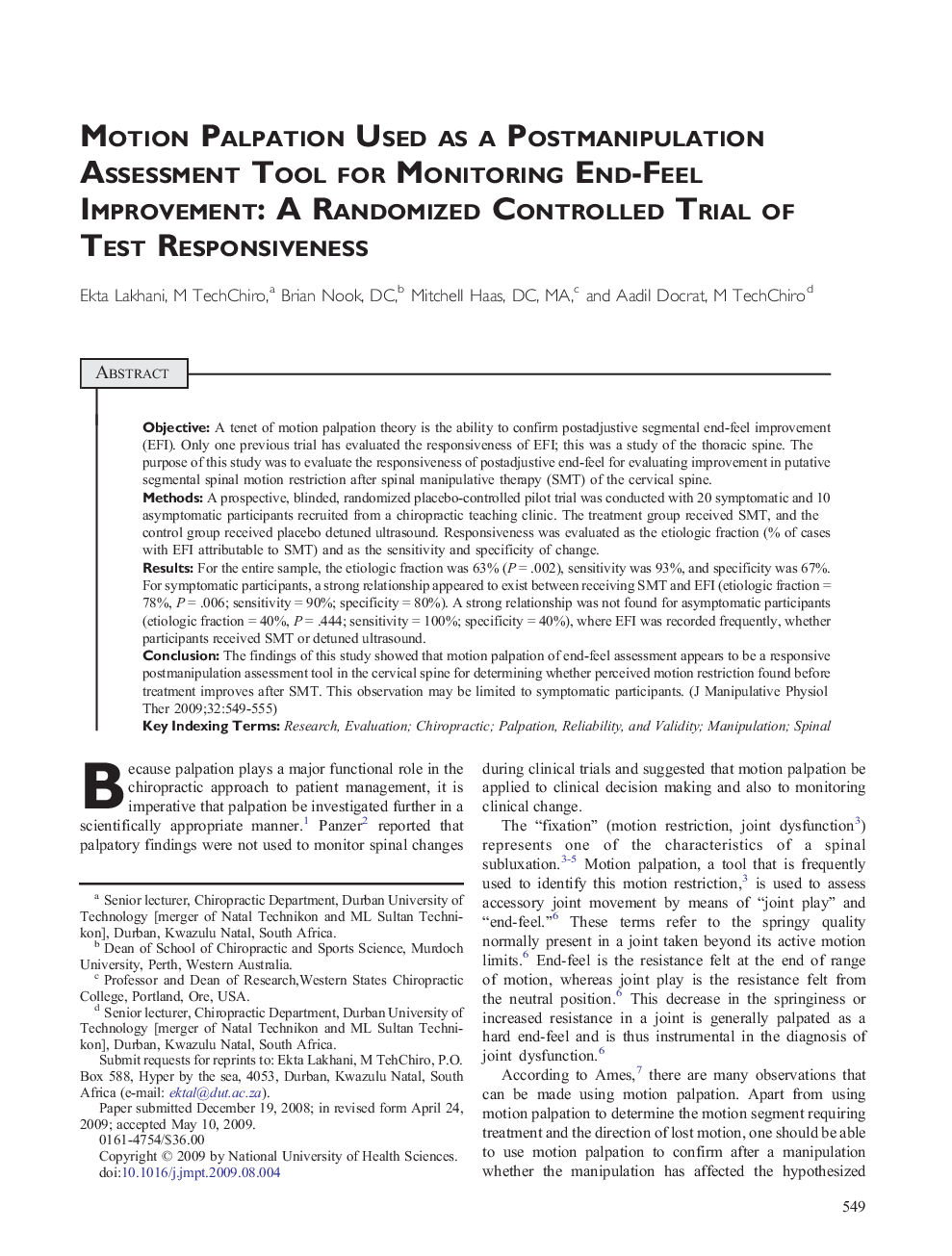| Article ID | Journal | Published Year | Pages | File Type |
|---|---|---|---|---|
| 2621402 | Journal of Manipulative and Physiological Therapeutics | 2009 | 7 Pages |
ObjectiveA tenet of motion palpation theory is the ability to confirm postadjustive segmental end-feel improvement (EFI). Only one previous trial has evaluated the responsiveness of EFI; this was a study of the thoracic spine. The purpose of this study was to evaluate the responsiveness of postadjustive end-feel for evaluating improvement in putative segmental spinal motion restriction after spinal manipulative therapy (SMT) of the cervical spine.MethodsA prospective, blinded, randomized placebo-controlled pilot trial was conducted with 20 symptomatic and 10 asymptomatic participants recruited from a chiropractic teaching clinic. The treatment group received SMT, and the control group received placebo detuned ultrasound. Responsiveness was evaluated as the etiologic fraction (% of cases with EFI attributable to SMT) and as the sensitivity and specificity of change.ResultsFor the entire sample, the etiologic fraction was 63% (P = .002), sensitivity was 93%, and specificity was 67%. For symptomatic participants, a strong relationship appeared to exist between receiving SMT and EFI (etiologic fraction = 78%, P = .006; sensitivity = 90%; specificity = 80%). A strong relationship was not found for asymptomatic participants (etiologic fraction = 40%, P = .444; sensitivity = 100%; specificity = 40%), where EFI was recorded frequently, whether participants received SMT or detuned ultrasound.ConclusionThe findings of this study showed that motion palpation of end-feel assessment appears to be a responsive postmanipulation assessment tool in the cervical spine for determining whether perceived motion restriction found before treatment improves after SMT. This observation may be limited to symptomatic participants.
